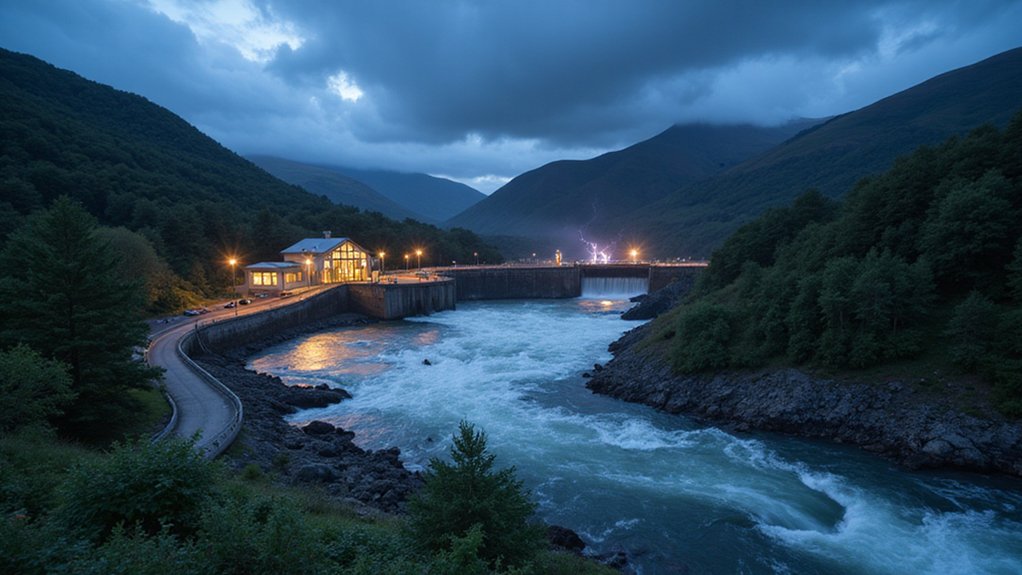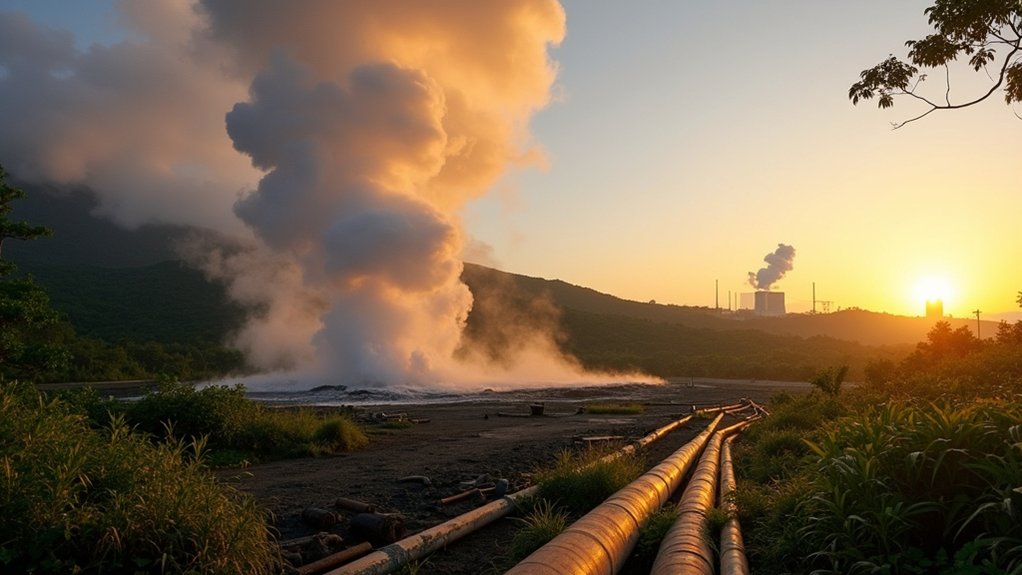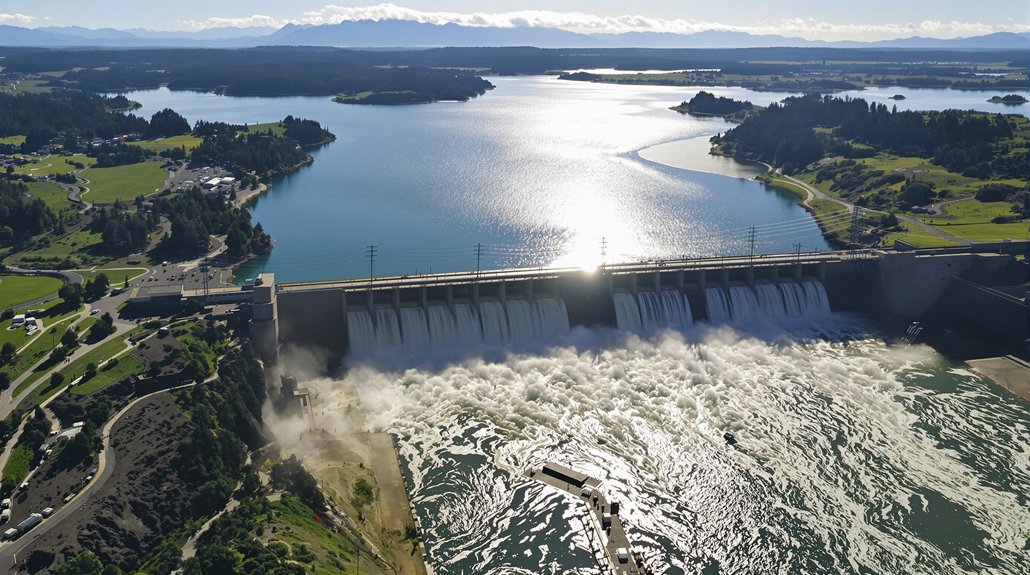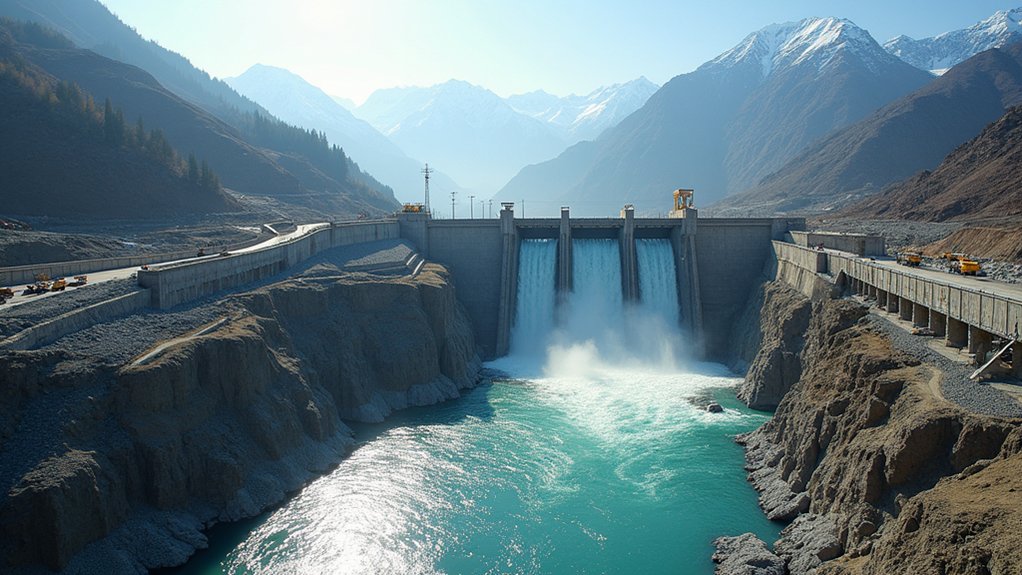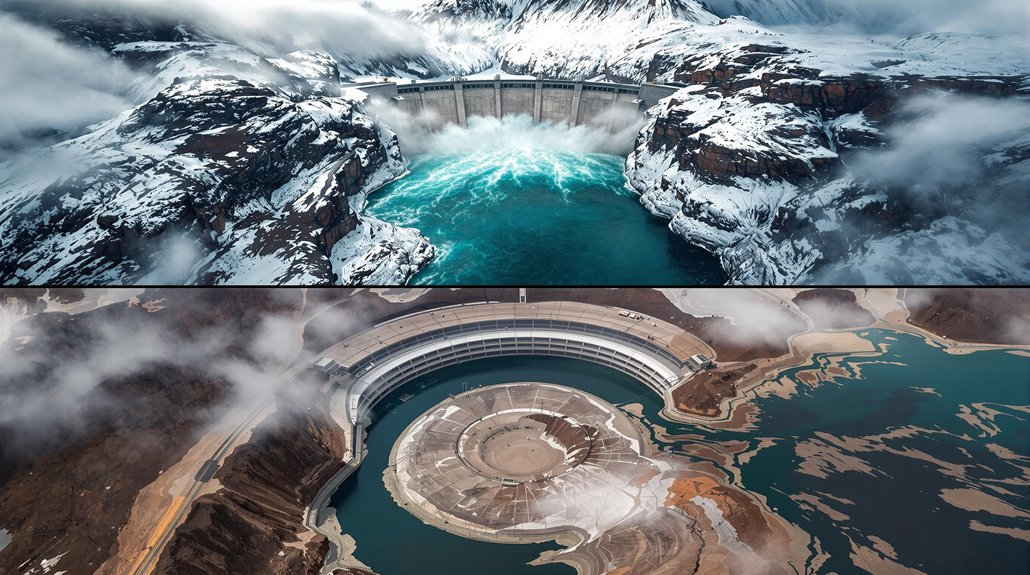Most people don’t realize Wales has a secret weapon against blackouts. When Storm Darragh hammered the UK and knocked out power for tens of thousands, Welsh hydropower plants jumped into action. The grid tripped. Chaos everywhere. But the Rheidol Hydropower Scheme? It kept pumping electricity like nothing happened.
This isn’t some newfangled tech either. Rheidol’s been running for over 60 years. That’s older than most people reading this. The system works because it’s ridiculously simple yet sophisticated. Water flows through angled screens into forebay tanks—basically giant bathtubs where air bubbles fizz out before water hits the pipes.
Guide vanes of different sizes open and close based on river conditions. A PID control system constantly tweaks everything. It’s like cruise control for power generation. When Storm Darragh’s 96mph winds ripped through Wales, one generator at Rheidol got knocked offline, but the scheme adapted and kept running.
Here’s what makes Welsh hydropower special: it can respond in seconds. Grid wobbles? Hydropower stabilizes it. Storm knocks out transmission lines? These facilities keep local areas powered. Control centers monitor every project across the UK and Ireland, 24 hours a day. When disaster strikes, technicians can remotely adjust multiple facilities simultaneously.
The environmental angle matters too. Water level sensors guarantee rivers don’t run dry. When levels drop too low, the system backs off. Wildlife protection built right in. Wales wants net-zero emissions by 2050, and hydropower’s a big piece of that puzzle. No coal burning. No gas emissions. Just water doing what water does. The Future Energy Grids for Wales report shows electricity demand could rise by 20TWh by 2050, making these clean energy sources even more critical.
Future projects will handle 45% of Britain’s grid stability services. That’s nearly half the country’s backup power coming from Welsh valleys. Local Area Energy Plans already incorporate these systems into broader network planning. It’s whole-system thinking, coordinating different energy sources. Similar to geothermal energy, hydropower delivers remarkable reliability with a high capacity factor that ensures consistent performance regardless of weather conditions.
During extreme weather, these facilities become lifelines. Lightning protection keeps monitoring equipment running. Surge protectors prevent damage. The infrastructure’s built tough because it has to be. When everything else fails, hydropower keeps running.
The next time lights flicker during a storm, remember: somewhere in Wales, water’s rushing through turbines, keeping the darkness at bay. Not bad for technology that’s been around since before your parents were born.
References
- https://www.gov.wales/sites/default/files/publications/2023-07/future-energy-grids-for-wales-technical-report.pdf
- https://www.statkraft.co.uk/newsroom/2024/how-statkrafts-team-at-rheidol-turned-the-lights-back-on-in-wales/
- https://www.gov.wales/sites/default/files/publications/2018-09/generating-your-own-energy-hydropower.pdf
- https://es.catapult.org.uk/project/future-energy-grids-for-wales/
- https://www.rs-online.com/designspark/hydro-power-a-tale-of-two-valleys
